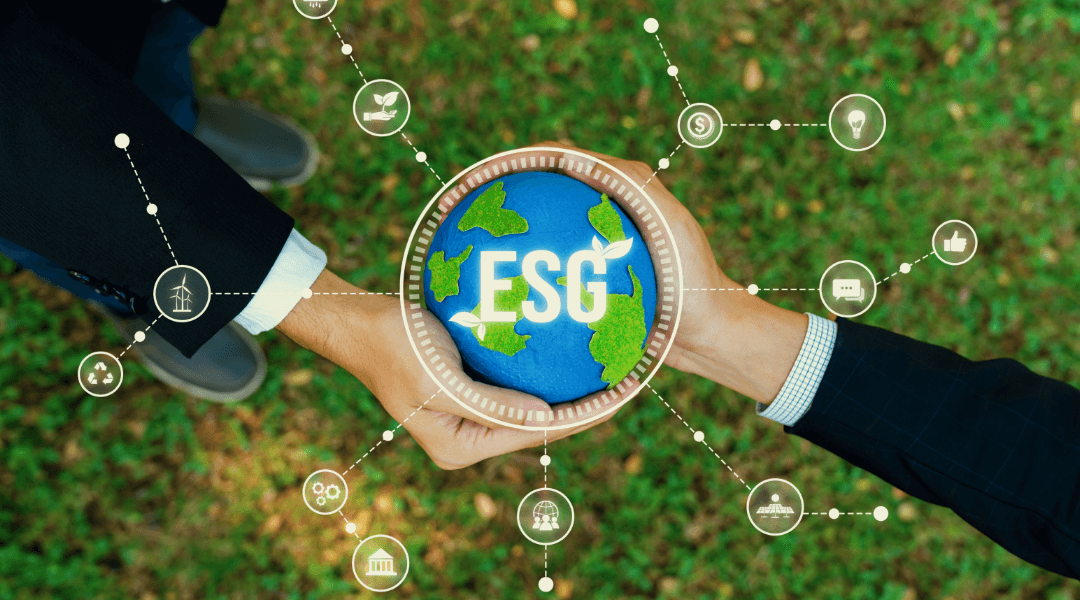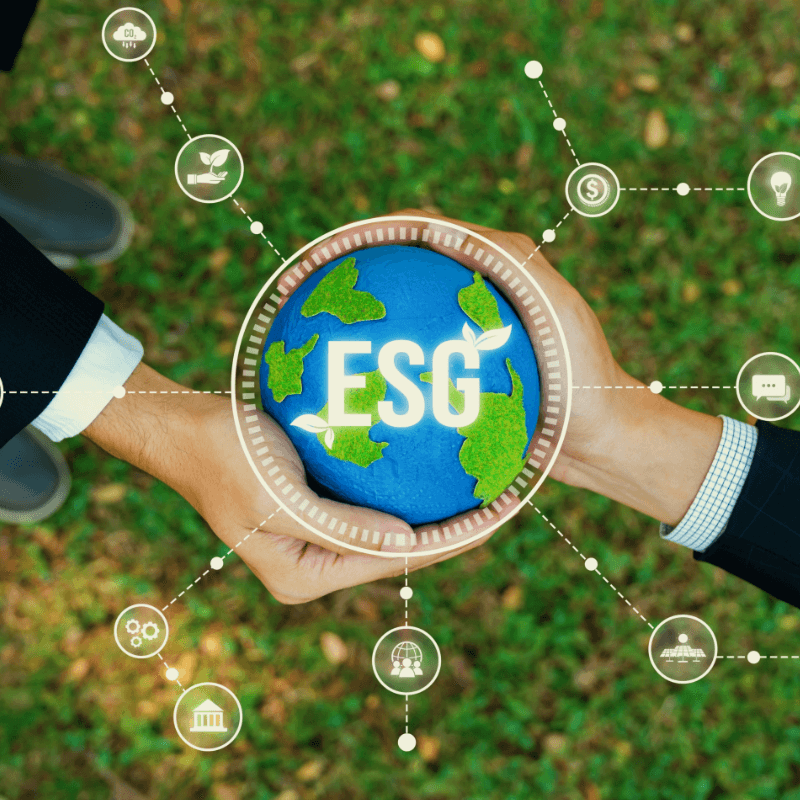With the implementation of the Corporate Sustainability Reporting Directive (CSRD) in January 2024, the adoption of the European Sustainability Reporting Standards (ESRS) has become mandatory for companies within its scope. This marks a significant step towards standardised non-financial reporting across Europe.
The ESRS aims to provide an accurate and transparent view of a company’s environmental, social and governance (ESG) impacts, risks, challenges, and opportunities. This goes beyond just following regulations, it represents a move towards integrating sustainability into the heart of corporate reporting, showing a commitment to a sustainable economic future.
By calling for much more detailed disclosure than ever before, the ESRS encourages companies working in Europe and beyond to reassess their sustainability practices. It establishes a new benchmark for corporate accountability, and ensures businesses are fostering a more informed landscape for all stakeholders.
But what exactly is the ESRS?
What is the ESRS?
To help organisations comply with the CSRD, the EU Commission created the European Sustainability Reporting Standards (ESRSs) which detail how companies must report on sustainability risks and impacts in order to follow regulations.
The ESRS requires businesses to report on the potential risks and benefits related to social and environmental issues, as well as the effects of their operations on society and the environment. Assurance is necessary for all disclosures.
In total, there are 12 ESRS standards that outline the reporting requirements for the CSRD. The standards are divided into two ‘cross-cutting’ standards and 10 ‘topical’ standards.
‘Cross-cutting’ means that the standards are compulsory for all companies, regardless of revenue, size and geographical location. ‘Topical’ refers to the environmental, social and governance aspects of the CSRD, and provides the metrics for reporting under those factors.
Cross-cutting standards establish the fundamental requirements for compliance, and the two under the ESRS are:
General Requirements – ESRS 1: This standard sets the general principles for sustainability reporting. It details the areas and minimum requirements needed for understanding a company’s impacts, risks, and opportunities regarding ESG. It clarifies the concept of double materiality and establishes what information is mandatory, optional, or subject to materiality assessment.
General Disclosures – ESRS 2: This standard provides essential information for preparing a sustainability statement, for all companies regardless of their sustainable activities. It calls for information on materiality assessments, KPIs, value chain coverage, as well as governance and strategy.
The topical standards provide a specialised framework for disclosure in specific ESG areas. Although not mandatory, these standards play a crucial role in allowing companies to assess and demonstrate their sustainability practices, improving the detail and significance of their reports. The topical standards are:
Environment – ESRS E1: Climate
Environment – ESRS E2: Pollution
Environment – ESRS E3: Water and marine resources
Environment – ESRS E4: Biodiversity and ecosystems
Environment – ESRS E5: Resource use and circular economy
Social – ESRS S1: Own workforce
Social – ESRS S2: Workers in the value chain
Social – ESRS S3: Affected communities
Social – ESRS S4: Consumers and end users
Governance – ESRS G1: Business conduct
Expected to be approved by the European Commission by June 2026, the ESRS will also develop sector-specific standards to address the unique reporting requirements of each industry. These standards will be designed to make reporting more relevant and informative, by taking into account the specific sustainability challenges and opportunities faced by different sectors.
What is Double Materiality?
At the core of the ESRS framework is the concept of double materiality, which aims to demonstrate the interconnectedness of sustainability issues.
To figure out which specific standards your company should report on, you will need to do double materiality assessments. This means both impact and financial materiality assessments must be undertaken.
Financial materiality refers to the environmental and social factors that could result in financial risk for the company. Impact materiality refers to the critical impacts that a company has on the environment, on society, and on people.
This approach ensures companies can determine which sustainability issues are most important to their company and stakeholders. It helps prioritise disclosure and resource allocation.
How can you prepare for the ESRS?
Preparing for the ESRS and transitioning into ESRS reporting presents both challenges and opportunities for organisations. In order to report effectively under the ESRS, companies should consider the following steps:
Set the objectives and boundaries of your ESRS reporting
Your company might already produce financial reports, and if so your sustainability reports need to align with the same scope. Further reporting requirements could include the documentation of a company’s impact, risks, and opportunities throughout the complete value chain, from start to finish.
It is important to clearly define the time frame used in your reporting, categorising reports as short, medium, and long-term. These boundaries will be crucial to establish for preparing for the ESRS.
Conduct a double materiality assessment
The ESRS outlines various topics and subtopics that can be the basis for starting your double materiality assessment. You need to identify the necessary material topics by assessing their impact from both a financial and societal perspective.
You should undertake a comprehensive analysis of your organisation’s activities and their potential impacts on people, communities, and the environment, as well as financial performance, in order to effectively prioritise disclosure efforts.
Assess your data collection process and identify any gaps
It’s important to assess your data collection processes in order to evaluate their effectiveness, as well as to identify any informational gaps. This includes a comprehensive review of your current sustainability reporting disclosures to evaluate their alignment with ESRS standards and identify areas in need of improvement.
Once you’ve determined which issues are material to your organisation, you need to undertake an analysis of any gaps. This is to ensure you’re collecting all the necessary data for the issues you’ve identified. This involves looking over the ESRS requirements, data point by data point, to check whether your company is collecting and reporting the correct information. By following this systematic process, you can pinpoint any data gaps and opportunities for improvement to comply with the ESRS.
Plan for effective data collection
Companies need to develop an effective and strategic approach to data collection and reporting. Before you just begin reporting, make sure to carefully read the ESRS’ thorough explanation on how to report each indicator.
Then, you need to assess your current processes to see if they meet these requirements. If they don’t meet them, you should establish new methods and processes of data collection for the indicators, as well as enhance your internal capabilities. Large companies might need specialised systems and software to unite data collection across the organisation, reducing errors and ensuring transparency.
There should be clearly defined roles and responsibilities within your company to establish efficient data collections. Resources need to be allocated properly and each team needs to be able to comprehend their role in gathering and reporting data.
Prepare for third party auditing
It is important to be prepared for third-party auditing and assurance to confirm the accuracy and trustworthiness of the information in your sustainability reports. By working with verified assurance partners, you can address potential challenges and improve the credibility and transparency of your reporting.
How can Convene help with the ESRS and the CSRD?
The CSRD and ESRS are crucial milestones in the EU’s progress towards a more sustainable corporate environment. Adapting to these regulations involves more than just meeting requirements; it requires businesses to revolutionise their approach towards sustainability.
Companies can ensure compliance and improve sustainability practices by taking a proactive approach to understanding and implementing ESRS requirements. This will also help enhance corporate transparency and support the global sustainability agenda.
One way to be proactive is to invest in software that can make the process of data collection and ESG reporting much simpler.
This is where Convene comes in.
We have developed our own ESG reporting tool: Convene ESG.
Convene ESG provides an end-to-end platform to collect data, track progress, compare with peers, align with frameworks and produce ESG reports.
With Convene ESG, you can collect your data for all the necessary metrics in the upcoming CSRD legislation, ensuring that you are compliant with regulations. This will allow you to further explore your company’s sustainability strategies. With various global and regional frameworks also built in to Convene ESG, you will easily comply and report against any other standards without the need to repeat the reporting process.
Convene ESG is designed to make the reporting process as easy as possible, meaning that you can anticipate changes in current ESG legislation, be ready to face the challenges of future regulations and fully integrate ESG considerations into your company culture.




